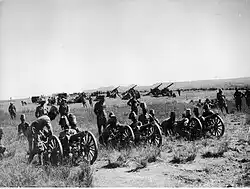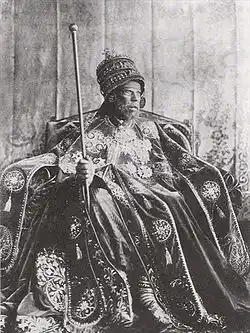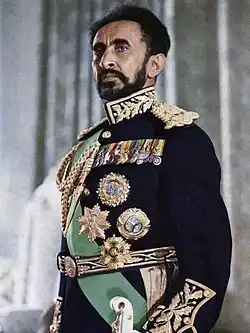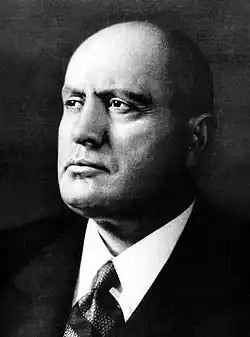
The Italio-Ethiopian Wars were two conflicts that were fought between the Kingdom of Italy and Ethiopia or Abyssinia. The first was fought over nearly the entirety of 1895 and 1896 as the Italians sought to link up their two pre-existing colonies in the Horn of Africa, Italian Eritrea and Italian Somaliland. This First Italo-Ethiopian War ended in an embarrassing defeat for the Italians and ensured that the Empire of Abyssinia remained virtually the only native nation in Africa to remain independent of the European powers during the Scramble for Africa. The Second Italo-Ethiopian War commenced in 1935 as Benito Mussolini’s fascist government sought to accomplish what their forbears had failed in forty years earlier. They were successful on the second attempt and Italy briefly became the dominant power in the Horn of Africa. However, the Italian colonies here were quickly overrun by the British and their Commonwealth allies in 1940 and 1941 once Italy joined Nazi Germany in the Second World War. Because of the largely failed nature of the Italo-Ethiopian Wars, they resulted in little migration and Ethiopia today remains one the countries least impacted by the European age of imperialism.[1]
Research your ancestors on MyHeritage
Italo-Ethiopian Wars chronology of eventsItalo-Ethiopian Wars chronology of events
The Italo-Ethiopian Wars came about as a result of the Scramble for Africa in the first instance, a process which played out roughly between 1860 and the outbreak of the First World War in 1914. While several European countries had acquired coastal colonies around the perimeter of Africa going back to the sixteenth century, in the second half of the nineteenth century intense competition developed to swallow up as much of the continent as possible, with Britain, France, King Leopold II of Belgium in a private capacity, the German Empire and Italy being the primary players. Following the opening of the Suez Canal, Italy focused its attentions on the Horn of Africa on the southern end of the entryway into the Red Sea. It began acquiring concessions here in the late 1860s and then in the 1880s established two formal colonies, Italian Eritrea, corresponding largely with modern-day Eritrea, and Italian Somaliland, covering the eastern half of modern-day Somalia on the Indian Ocean side of the Horn of Africa.[2]

The French and British also acquired smaller colonies in Somaliland during this period. Fearful that they would expand and desiring to link up their two colonies in Eritrea and Somaliland, the Italians began developing plans to conquer the Empire of Ethiopia, a substantial African power that was also known at the time as Abyssinia. If Abyssinia could be conquered it would leave the Italians as the dominant power in the Horn of Africa, with a contiguous land mass running from the Red Sea to the Indian Ocean. Thus, in January 1895 the Italian government invaded Ethiopia after years of diplomatic negotiations between the Italians and the government of Emperor Menelik II of Ethiopia over the Eritrean border.[3]
The First Italo-Ethiopian War raged for nearly two years down to October 1896. Some 30,000 Italian troops from Eritrea entered the country from the north and gained initial victories in the land of the Tigrayan people. Thereafter Emperor Menelik II was able to gather together a large army to resist the incursion by the Italians. Although the Italians had modern machine guns and other weapons, the Ethiopian armies numbered over 100,000 men. Moreover, the Italians were poorly organized and commanded. Hence, when the rival forces clashed at the Battle of Adwa on the 1st of March 1896, the numerically superior Ethiopian army managed to win a major victory. This effectively ended the chances of Italy conquering Abyssinia. The Treaty of Addis Ababa was signed the following October. Under the terms of it the Italians recognized the independence of Abyssinia. In return some 3,000 Italian prisoners who had been captured at the Battle of Adwa were released, while the peace also ensured that Menelik would not invade Italian Eritrea, which he could have done at the time. Furthermore, in 1897 the British and French concluded agreements with the Ethiopians whereby they also acknowledged the independence of Abyssinia.[4]

Ethiopia/Abyssinia remained an independent nation for the next four decades, eventually coming under the rule of the famous Emperor Haile Selassie. However, an infamous leader also rose to power in Italy during this time. Benito Mussolini became the leader of fascist Italy in 1922 after the March on Rome. A former socialist who was previously opposed to European imperialism, he had now become a committed imperialist determined to resurrect the perceived past glories of Italy by recreating part of the Roman Empire in the Mediterranean, the so-called ‘Fourth Shore’, which involved plans to conquer Albania and properly colonize Libya.[5] While Italian fascism’s efforts in Africa focused on Libya throughout the 1920s, eventually in the 1930s Mussolini turned his attentions to the Horn of Africa and became determined to start a new war against Abyssinia to conquer it where Italy had previously failed.[6]

The Second Italo-Ethiopian War began when Italy invaded Ethiopia in October 1935. A huge army of some 200,000 men was employed on this occasion, again entering from Italian Eritrea. After a six-month long campaign, the Italians managed to capture the capital, Addis Ababa, in May 1936. Fighting continued thereafter for a time, as Haile Selassie had an army of over half a million men that continued to hold out in many regions. To break their resistance, the Italian resorted to the use of chemical weapons.[7] The last of the fighting took place early in 1937, ending in the conquest of Ethiopia. Haile Selassie went into exile in Britain.[8] The war and annexation of Abyssinia by Italy was broadly seen as signaling the death knell of the League of Nations, the forerunner of the United Nations, which had already failed to prevent Japan's annexation of Manchuria in north-eastern China back in 1931.[9]
The Italians had finally secured control over Abyssinia after forty years. However, their rule here would only last for four years after the Second Italo-Ethiopian War concluded. In the summer of 1940, after Nazi Germany had engaged in a swift campaign to conquer the Low Countries and France, Mussolini entered the Second World War on the side of the Nazis. While the Italians would go on to play a prominent role in the war in the Balkans and North Africa, their colonies in the Horn of Africa were isolated, as the British controlled the Suez Canal through which any Italian resupply of Ethiopia would have to pass. Therefore the British, with their Commonwealth allies from South Africa, Australia, New Zealand and India, quickly launched a campaign in East Africa which conquered all of the Italian colonies there in 1941. Abyssinia would revert to the rule of Haile Selassie thereafter and continued as such until he was deposed in 1974.[10]
Demographic impact of the Italo-Ethiopian WarsDemographic impact of the Italo-Ethiopian Wars
The Italo-Ethiopian Wars had a very limited impact on migration to and from the Horn of Africa and on the long-term demography of Ethiopia. In fact, they largely ensured that Abyssinia/Ethiopia remained independent. This made Abyssinia one of the only nations not be colonized in Africa during the nineteenth or early twentieth centuries. Moreover, of the other few countries that remained nominally independent, notably Egypt, these were effectively protectorates of the European powers, Britain in the Egyptian case. Had the Italians not failed so spectacularly in trying to conquer Abyssinia in the mid-1890s, perhaps the British or French might have tried to take over the Horn of Africa, probably with more success. The preservation of Abyssinian independence in 1896, and the short-lived nature of Italian colonial rule following the second war, ensured that Ethiopia is one of the only countries in Africa that has not been impacted on by colonial migration.[11]
See alsoSee also
Explore more about the Italo-Ethiopian WarsExplore more about the Italo-Ethiopian Wars
- Italy, Births and Baptisms, 1806-1900 records collection on MyHeritage
- Italy, Marriages, 1809-1900 records collection on MyHeritage
- Italy, Deaths and Burials, 1809-1900 records collection on MyHeritage
- Italy, Honours and Awards records collection on MyHeritage
- Researching Your Italian Ancestors at Legacy Family Tree Webinars
- Long Distance Italian Genealogy Research at Legacy Family Tree Webinars
References
- ↑ George W. Baer, The Coming of the Italian-Ethiopian War (Harvard, 1967).
- ↑ Robert Gale Woolbert, ‘Italian Colonial Expansion in Africa’, in The Journal of Modern History, Vol. 4, No. 3 (September, 1932), pp. 430–445.
- ↑ https://www.history.com/news/battle-adwa-ethiopia-africa-colonization
- ↑ Raymond Jonas, The Battle of Adwa: African Victory in the Age of Empire (Harvard, 2011).
- ↑ Martin Moore and Tracy Philipps, ‘Fourth Shore--Italy's Mass Colonisation of Libya’, in Journal of the Royal African Society, Vol. 39, No. 155 (April, 1940), pp. 129–133.
- ↑ Frank Hardie, The Abyssinian Crisis (London, 1974).
- ↑ Albert Sbacchi, ‘Poison Gas and Atrocities in the Italo-Ethiopian War (1935–1936)’, in Ruth Ben-Ghiat and Mia Fuller (eds.), Italian Colonialism (London, 2005), pp. 47–56.
- ↑ Alberto Sbacchi, ‘The Italians and the Italo-Ethiopian War, 1935–1936’, in Transafrican Journal of History, Vol. 5, No. 2 (1976), pp. 123–138.
- ↑ George W. Baer, ‘Sanctions and Security: The League of Nations and the Italian-Ethiopian War, 1935–1936’, in International Organization, Vol. 27, No. 2 (Spring, 1973), pp. 165–179.
- ↑ https://www.iwm.org.uk/history/how-italy-was-defeated-in-east-africa-in-1941
- ↑ https://www.bbc.co.uk/news/world-africa-13349398

